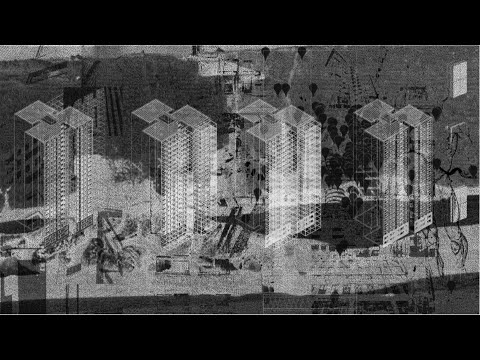
The Symposium aims to bring together different voices to discuss one of the most tragic failures of the built environment: the Grenfell Tower fire.
The Symposium does not claim to instruct or find solutions but values the occasion to generate a set of conversations throughout and beyond the AA. We understand the Grenfell Tower incident and tragedy as the starting point in a conversation that seeks to question a much larger national crisis.
If in architecture schools we are instructed through exemplary projects that have traced our past and present times, should we not also discuss and learn from the failures that have scarred the very histories we place under our architectural lens? During the Symposium, we will metaphorically cross the strata of Grenfell’s building to learn from what happened in and behind its section.
Starting from the materiality of the combustible elements of the cladding, we will examine what took place behind Grenfell’s facade to then scale out again into the city context. The twelve centimetres of plastic-based insulation protected by composite panels in the Tower brings us beyond the problematics of combustibility and toxicity and instead reveals systematic injustices and ignored cycles of failure. In cases like Grenfell, the material disintegration of the facade becomes the metaphor for the immaterial disintegration of the notion of care in housing.
The symposium brings together resident groups, technical experts, journalists, architects, writers and members of local authorities to discuss what can be learnt from Grenfell and how we can prevent the layering of time to obfuscate our view on the tragedy. It is structured in three parts:
0:00
SECTION I_ THE POLITICS OF THE FAÇADE
Grenfell’s story sits between a social and relational problematic of governing public housing and a tragic performance of deceitful layers that escape their performative original nature. In this chapter we delve into the material and architectural composition of the facade in order to display layer after layer meanings, materials and motions.
Speakers: PETER APPS, JOSE TORERO, CONSTANCE SMITH. Chaired by GIULIA ROSA
2:03:22
SECTION II_ BEHIND THE FAÇADE: THE NEGLECTED USER VOICE
The fragmented section of the facade speaks about a disintegration of actors and liabilities. Apparently seamless, the panellised skin hides a complex system of loose interconnections between components and people. In the second chapter we metaphorically cross the strata of the building to learn from what happened behind its section, giving space to the ignored cycles of failure and recognising the neglected user voice.
Speakers: SHAREEFA ENERGY, EDWARD DAFFARN, EMMA DENT COAD, HELENA RIVERA, NATHANIEL MCBRIDE. Chaired by LIAM ROSS
3:59:09
SECTION III_BEYOND THE FAÇADE: FROM THE HOME TO THE CITY
After the Fire in 2017, the scale of use of combustible cladding on buildings around the UK was stated, clearly revealing a national crisis. In the last chapter we scaled out into the city to delve into how deregulation, financialisation of housing and deep urban inequalities played a part in the narrative. Here we reflect upon what has yet to be learnt from Grenfell, how practice and professions are changing, and how care can be implemented in the management and delivery of social housing.
Speakers: ANNA MINTON, LIAM ROSS, STUART HODKINSON, CAITLIN COLQUHOUN. Chaired by ELEANOR DODMAN
Organised by Giulia Rosa with Liam Ross